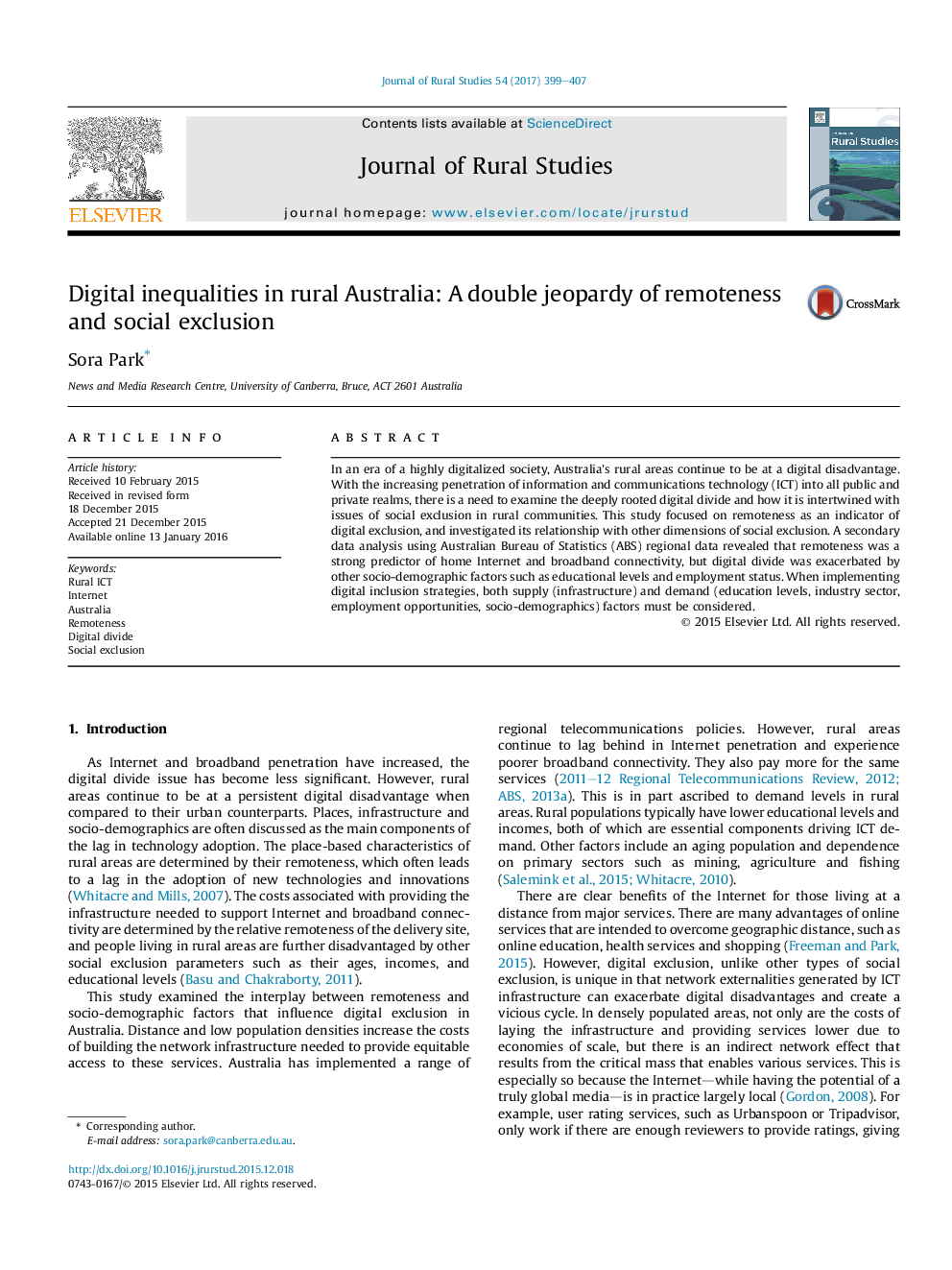| Article ID | Journal | Published Year | Pages | File Type |
|---|---|---|---|---|
| 6460002 | Journal of Rural Studies | 2017 | 9 Pages |
â¢Australia's rural areas continue to be at a digital disadvantage.â¢The relationship between remoteness and social exclusion parameters was investigated.â¢Geographic remoteness was exacerbated by educational levels, aging population, Indigenous population, unemployment rate and agricultural industries.â¢Both supply and demand factors must be considered in digital inclusion policies.
In an era of a highly digitalized society, Australia's rural areas continue to be at a digital disadvantage. With the increasing penetration of information and communications technology (ICT) into all public and private realms, there is a need to examine the deeply rooted digital divide and how it is intertwined with issues of social exclusion in rural communities. This study focused on remoteness as an indicator of digital exclusion, and investigated its relationship with other dimensions of social exclusion. A secondary data analysis using Australian Bureau of Statistics (ABS) regional data revealed that remoteness was a strong predictor of home Internet and broadband connectivity, but digital divide was exacerbated by other socio-demographic factors such as educational levels and employment status. When implementing digital inclusion strategies, both supply (infrastructure) and demand (education levels, industry sector, employment opportunities, socio-demographics) factors must be considered.
